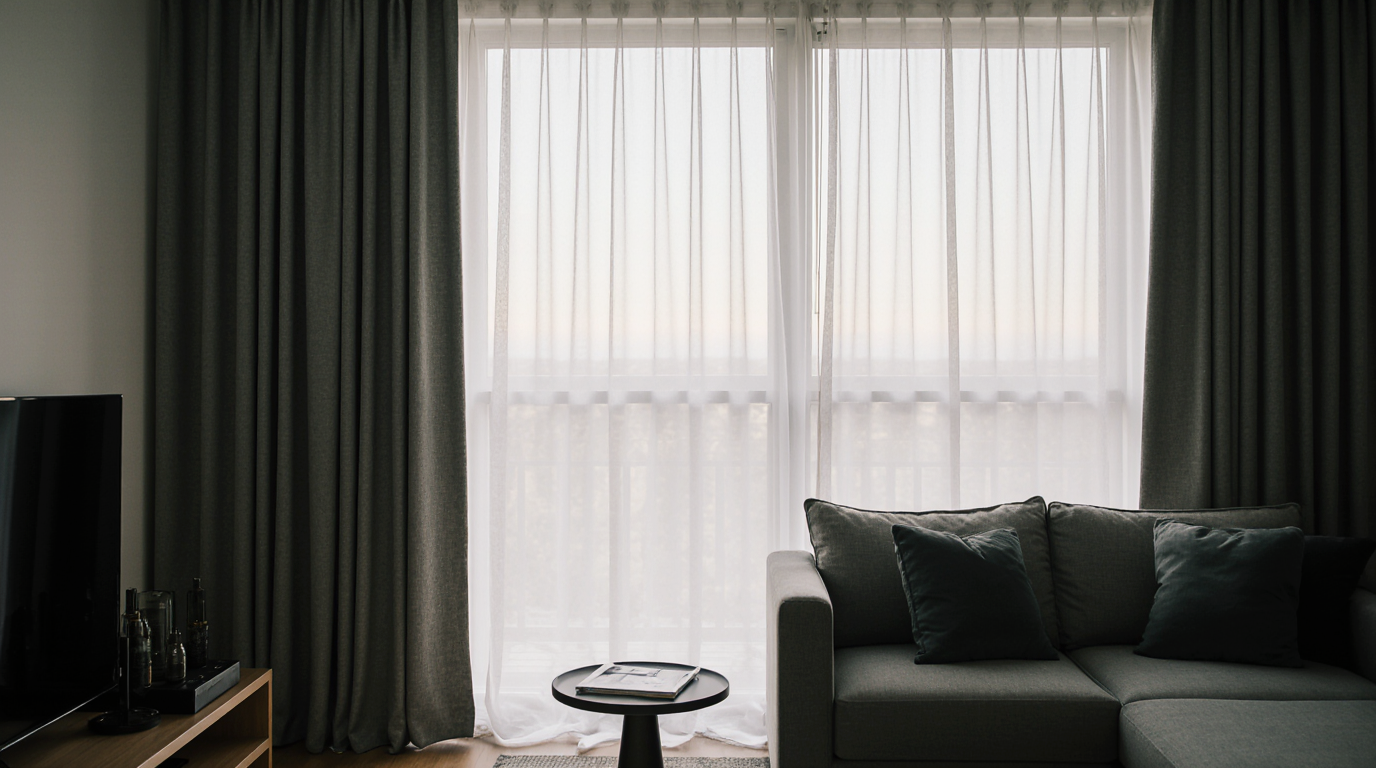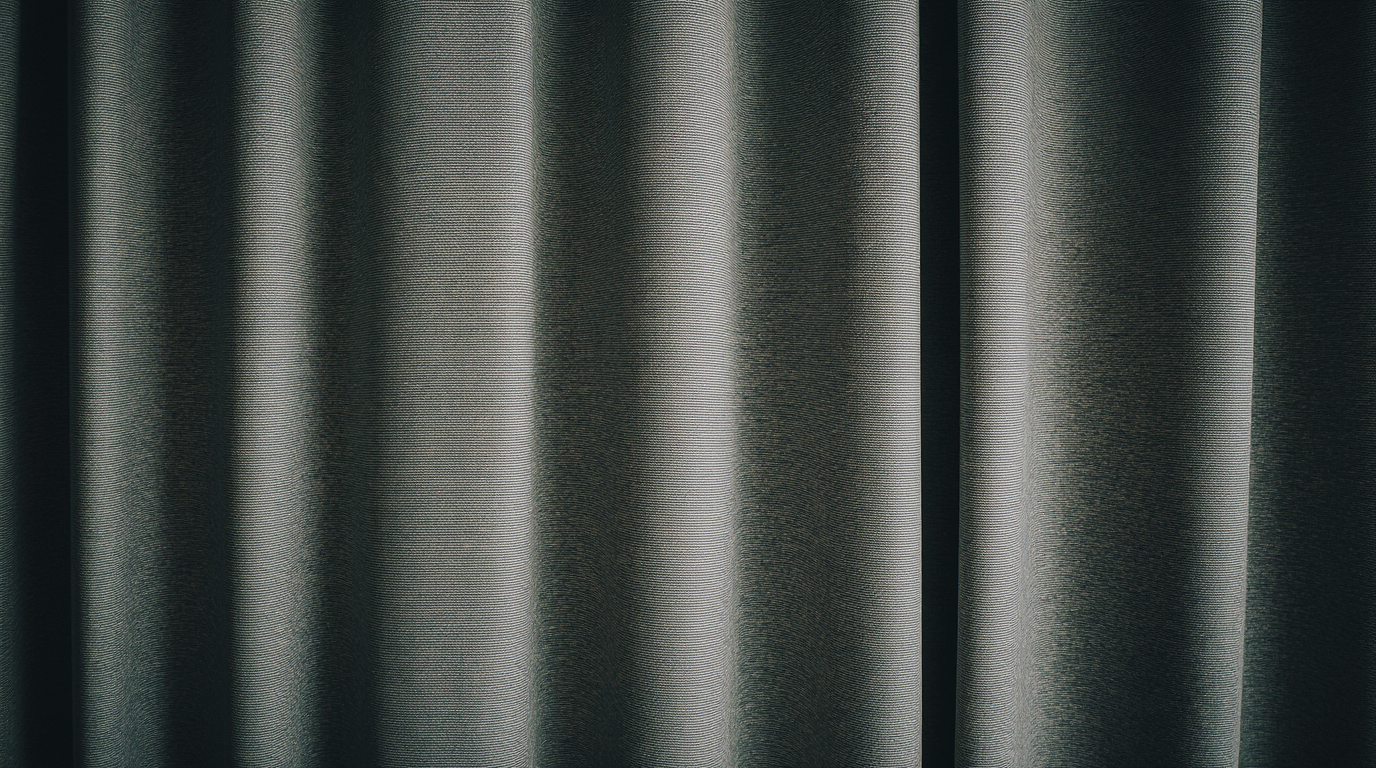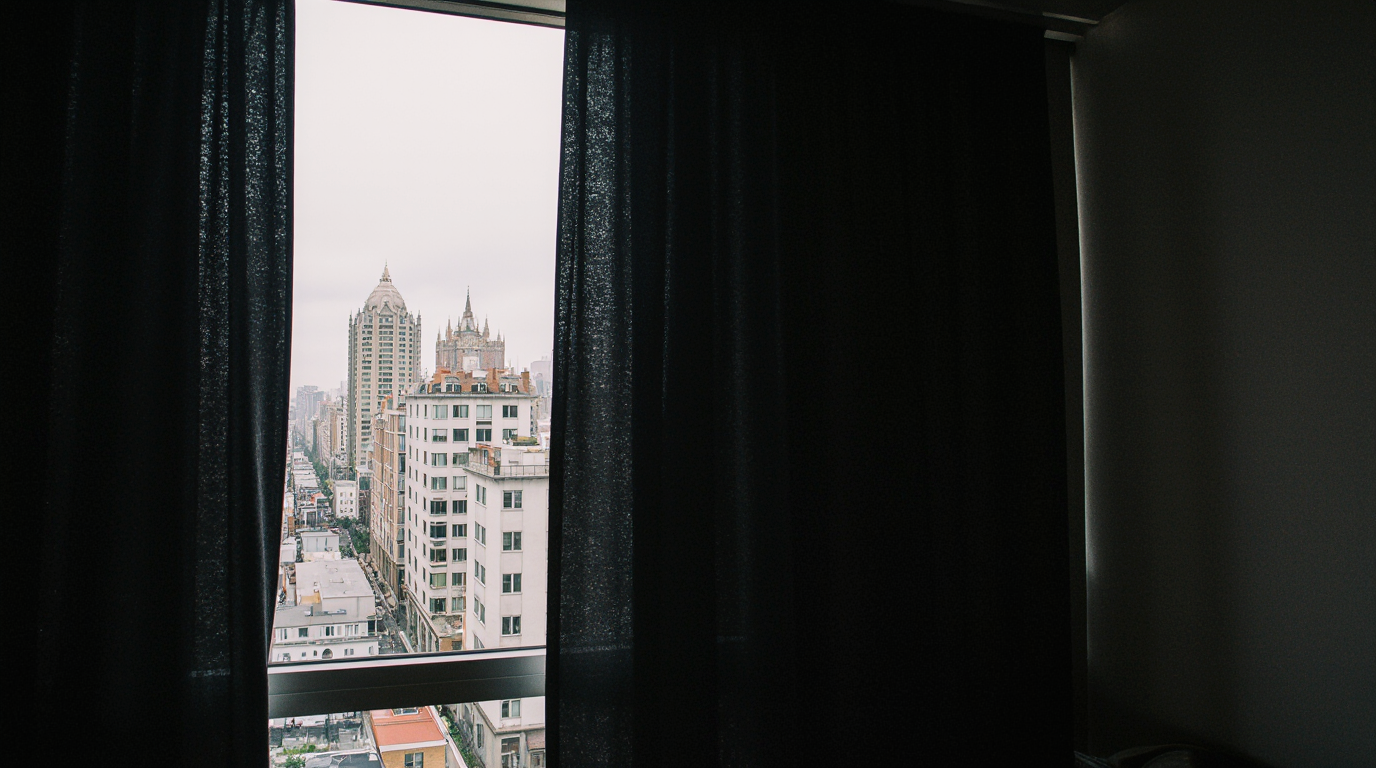
Let`s get this out of the way first - yes, curtains can help with sound, but not in the way most people expect. They don`t magically turn your noisy apartment into a silent recording studio. What they do is make your room sound better, calmer, and less echoey. And that difference can feel huge in the right space.
At Sound Pro Solutions, we`ve spent decades working with architects, contractors, and homeowners who want quieter, more comfortable rooms. From recording studios to offices and residential projects, we`ve seen every possible sound problem-and every "quick fix" that doesn`t quite work. Curtains fall somewhere in between. They help, but they don`t solve.
So, what will you actually learn here? You`ll find out how soundproof curtains really work, when they`re useful, when they`re not, and what to use instead if you truly want to block noise. You`ll also learn how to make curtains perform at their best if you decide to try them.
How Soundproof Curtains Work

Here`s the first thing most people get wrong: blocking sound and absorbing sound are not the same. Blocking means stopping sound from passing through a wall, window, or door. Absorbing means reducing how much sound bounces around inside a room. Curtains fall into the second category-they absorb.
That`s why even the best curtains won`t stop your neighbor`s music from coming through the wall. What they can do is stop your own room from echoing and sounding harsh. When you hang heavy drapes, especially from ceiling to floor, you reduce reflections of high-frequency sounds-voices, clinking dishes, typing on a keyboard. It makes your space feel softer and more pleasant.
If you`ve seen terms like "soundproof curtains", "noise-cancelling curtains", or "acoustic curtains", don`t be misled. Those names are mostly marketing. The truth is, all of them work on the same principle: heavy fabric adds a bit of absorption and a bit of mass. In measurable terms, that translates to around 3-7 decibels of sound reduction. Noticeable, yes. Transformative, no.
Some blackout curtains claim to block noise as well. The idea makes sense-thick, multi-layer blackout curtains are denser than decorative ones. But even those don`t actually stop sound transmission through windows or walls. They just absorb part of the echo and slightly reduce sound reflection.
When clients ask us, "do soundproof curtains work?" we tell them: they work for what they are. They`re not soundproofing. They`re acoustic improvement. The difference matters a lot.
When Curtains Help (And When They Don`t)
Let`s be honest: curtains help in some situations and do almost nothing in others. Knowing which is which saves both money and frustration.
Curtains shine when it comes to reducing echo in large or minimalist rooms. If your living room has hardwood floors, big windows, and little furniture, sound bounces everywhere. Hanging thick drapes softens that harsh reverb instantly. The space feels warmer, and conversations sound clearer.
They`re also great for taming high-frequency sounds-like children`s voices, kitchen noises, or that tinny sound your laptop speakers make. In small offices or home studios, heavy curtains across reflective glass can make a big difference in audio clarity.
And yes, curtains can complement other acoustic treatments. We often see clients combine them with wall panels, bass traps, or door seals. It`s a good move when you`re fine-tuning an already improved space.
But here`s the flip side. Curtains don`t help much when the noise source is outside your room-like traffic, neighbors, or HVAC hum. Those are low-frequency problems, and fabric won`t stop them. The vibrations go straight through glass, drywall, and framing. If you can hear conversations from next door, no curtain will change that.
So when you wonder "do noise-reducing curtains work?"-the answer is, they work for the sound that`s already in your space, not for the one coming through your walls.
In cases like street traffic or neighbor noise, you`ll need heavier, structural solutions. That`s where professional acoustic treatments come in. And that`s what we specialize in at Sound Pro Solutions.
Better Alternatives for Sound Blocking
If you`re serious about keeping sound out (or in), curtains just won`t cut it. Real soundproofing means adding mass, sealing gaps, and isolating structures.
Start with your windows-they`re usually the weakest link. High-quality window inserts or acoustic seals can reduce outside noise dramatically. They`re invisible once installed and don`t interfere with your décor.
Then, there`s door soundproofing. Even a tiny gap under a door can leak sound like an open vent. That`s why we carry door sweeps, perimeter seals, and acoustic thresholds that close those invisible paths where noise escapes.
For walls and ceilings, acoustic panels and mass-loaded vinyl barriers do what curtains can`t. Panels absorb mid and high frequencies far more effectively, and vinyl membranes add real sound-blocking mass without tearing down walls.
Many of our clients use combination approaches-for example, window seals plus a layer of MLV (mass loaded vinyl) behind drywall, topped with acoustic panels or curtains. That blend gives both a cleaner acoustic feel and real noise reduction.
When in doubt, call an expert. At Sound Pro Solutions, our team helps homeowners, contractors, and designers match the right materials to the actual sound problem. Because one-size-fits-all rarely works in acoustics.
If You Still Want to Try Curtains

Let`s be real - not everyone needs a full soundproofing overhaul. Sometimes you just want your space to feel calmer, less harsh, a little quieter. If that`s your goal, curtains can help - as long as you install them right and pick the right ones.
Here`s what actually matters:
Choose heavyweight, dense, multi-layer fabrics
Forget thin polyester drapes. For any acoustic benefit, the fabric has to be heavy - velvet, wool blends, suede, or layered blackout materials. The denser the fabric, the more sound it absorbs. Some people even double them up, hanging two layers with a small air gap in between. That air pocket works as a mini absorber and helps just a bit more.
If you`ve ever asked yourself, "do acoustic curtains work?" - they do, but only when they`re built like this: multi-layer, tightly woven, and heavy enough to feel like lifting a blanket.
Go floor-to-ceiling
Most people stop their curtains just below the window frame. That leaves sound paths open. For the best results, install your curtain rod as high as possible, and let the fabric fall all the way to the floor. The more surface area you cover, the more effective the curtain becomes.
It`s not just about style - it`s physics. Sound waves travel in every direction, and any uncovered space lets them slip through.
Cover the full width
If the curtain is too narrow, you`re not really doing anything. Always go at least 8-12 inches wider than the window on each side. When fully closed, the fabric should overlap itself and press gently against the wall.
People often wonder, "do noise cancelling curtains work?" The truth is, "noise cancelling" is a misnomer - they don`t cancel noise electronically like headphones. But a properly sized, dense curtain can noticeably reduce the sharpness of sound reflections and soften the room`s acoustics.
Combine with other methods
If you want a visible improvement, combine curtains with door seals, window inserts, or acoustic wall panels. Even one extra element can double your results. Curtains alone give partial absorption. Add a soundproofing seal around the window frame, and suddenly you`ve tackled both reflection and leakage.
This combo approach is how professionals build real results. It`s also what we advise every homeowner who asks, "do soundproof curtains work?" - yes, but better with help.
Keep expectations realistic
A curtain won`t stop a subwoofer or traffic noise. But it will take the edge off daily sounds, make voices sound softer, and help you relax. Think of it as part of a bigger acoustic puzzle. If that`s your mindset, you`ll never be disappointed with the outcome.
If you want to test the effect, try recording the room before and after hanging curtains. You`ll likely notice fewer reflections and a more balanced sound - proof that acoustic improvement doesn`t always need construction work.
So, What`s the Verdict?
So, do curtains block sound? Technically, no. They don`t block - they absorb. But they can still change how your space feels. That`s what makes them worth considering for comfort and atmosphere.
If you`re dealing with echo, glass reflections, or high-pitched chatter, curtains are a low-effort upgrade. They`re the accessory that makes a good room sound better. But if you`re fighting street traffic, neighbor noise, or deep vibrations, you`ll need proper soundproofing solutions.
At Sound Pro Solutions, we help people separate myths from physics. After decades in the field, we`ve learned that great sound isn`t about chasing magic fixes - it`s about combining the right materials for each problem.
When you`re ready for real results, we`re here. Our catalog includes acoustic panels, door seals, window solutions, and professional-grade materials used by studios, contractors, and homeowners across the U.S. You can browse everything at soundprosolutions.com, where each product is backed by our expert support and decades of industry experience.
Whether you need help choosing between acoustic curtains and wall panels, or you want a full noise control strategy, Sound Pro Solutions is your trusted partner for turning noise into peace.
Recent posts




